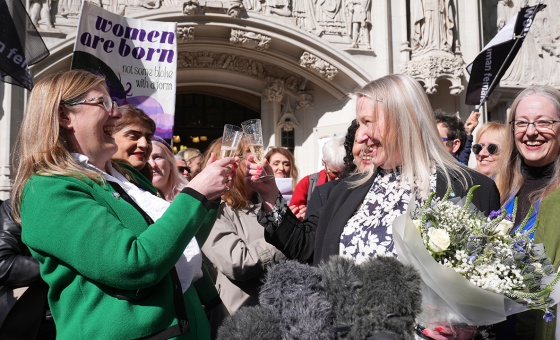This is the last article you can read this month
You can read more article this month
You can read more articles this month
Sorry your limit is up for this month
Reset on:
Please help support the Morning Star by subscribing here
CLIMATE change could pose a serious risk to more than three-quarters of pitches used by clubs in the top three tiers of English women’s football and the Scottish Women’s Premier League over the next 25 years, according to a new report.
Seventy-seven per cent of clubs — 46 out of 60 — are affected by multiple high or very high climate hazards in the medium term, modelling from the Green Football “Great Save” campaign and Zurich Resilience Solutions has found.
Across England, 77 per cent of clubs are projected to be exposed to high drought, 52 per cent to high levels of heatwave and 17 per cent to high levels of flooding by 2050, the report said.
Climate change is threatening the future of men’s and women’s football, with one in four professional English clubs set to be affected by yearly flooding by 2050.
However, the new research has found women’s teams, especially those outside of the professional game, could suffer disproportionately from flooded and damaged pitches, due to often playing at grounds with less robust infrastructure and multiple teams — both men’s and women’s — using them.
Many of these pitches are expected to face wind gusts of up to 120 miles per hour, flood depths approaching two metres, 16-day heatwaves and multiple month-long droughts by 2050.
This season, Storms Eowyn and Babet led to multiple match cancellations for clubs across the SWPL in order to preserve the safety of fans, players and staff.
The clubs with the greatest level of exposure to the climate threats studied were Aberdeen, Durham, Blackburn, Plymouth, Rangers, Montrose, Queen’s Park, Ipswich, Exeter and Bristol City.
Those pitches expected to be most at risk may not suffer the most climate-related damage if clubs are monitoring their risk exposure and preparing response plans where needed. This could be implementing measures such as improving drainage, harvesting rainwater to irrigate pitches, or more rain-absorbent surfaces.
The Green Football Great Save campaign is aimed at encouraging fans and clubs to develop climate-friendly habits, with the focus this year on reusing and upcycling old kit.
Rangers striker Jane Ross said: “Growing up playing grassroots football often meant running around a windy, soggy pitch in the rain. Whilst my skills have got better over the years, the climate hasn’t and it now threatens the future of the game I love.
“That’s why it is so important to do all we can to make sure everyone has the opportunity to keep playing — whether that’s in the local park or in a professional stadium. Campaigns like Green Football’s Great Save are so important as they help to show footballers, fans and clubs what we can collectively do to protect the game for the next generation of young players.”
The campaign has found that currently 100,000 tonnes of sports kit goes to landfill each year. This kit takes decades to break down and contributes to methane emissions — a powerful greenhouse gas which fuels climate change.
Sarah Jacobs, from Green Football’s Great Save, said: “This new research highlights the urgent need for football to turbo-charge its efforts to tackle climate change.
“Football has a huge opportunity to lead the charge, by shining a light on the issue, prioritising sustainability in business decisions and supporting millions of fans to make small but important changes in our everyday lives.”










